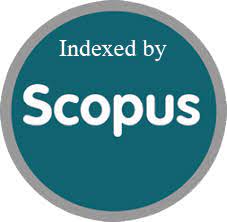Natural Approaches to Managing Dyslipidemia: a review of nutraceuticals for lipid regulation and clinical applications
DOI:
https://doi.org/10.52783/jns.v14.3337Keywords:
Dyslipidemia, Hypercholesterolemia, Lipoproteins, Natural products, Nutraceuticals, Phytochemicals, Polyunsaturated fatty acids.Dyslipidemia, Hypercholesterolemia, Lipoproteins, Natural products, Nutraceuticals, Phytochemicals, Polyunsaturated fatty acids.Abstract
The hallmarks of dyslipidemia, a major risk factor for cardiovascular disorders, are aberrant lipid levels that fuel atherosclerosis. Alternative therapeutic techniques are necessary because of the potential negative effects of standard lipid-lowering medications, including statins, despite their widespread use. By inhibiting the absorption of cholesterol, up regulating LDL receptors, and exhibiting antioxidant activity, natural products such as phytochemicals, polyphenols, flavonoids, and omega-3 fatty acids have shown notable lipid-lowering effects.
The function of several plant-based substances and their mechanisms of action in the treatment of dyslipidemia are examined. This review looks at the roles played by a number of plant-based compounds and how they work to treat dyslipidemia. The therapeutic potential of functional foods, medicinal plants, and bioactive compounds is highlighted through evidence from preclinical and clinical studies. A full understanding of these natural compounds may contribute to the development of safer, innovative treatments for dyslipidemia. These bioactive compounds, synergistic effects, dosage adjustment, and clinical validation should be the main topics of future research.
Downloads
Metrics
References
Cicero AF, Fogacci F, Stoian AP, Vrablik M, Al Rasadi K, Banach M, Toth PP, Rizzo M. Nutraceuticals in the management of dyslipidemia: which, when, and for whom? Could nutraceuticals help low-risk individuals with non-optimal lipid levels?. Current atherosclerosis reports. 2021 Oct; 23:1-4.
2. Penson PE, Banach M. The role of nutraceuticals in the optimization of lipid-lowering therapy in high-risk patients with dyslipidaemia. Current Atherosclerosis Reports. 2020 Nov;22:1-9.
3. Sharma S, Gaur K, Gupta R. Trends in epidemiology of dyslipidemias in India. Indian Heart Journal. 2024 Feb 12;76(Suppl 1):S20.
4. Liu T, Zhao D, Qi Y. Global trends in the epidemiology and management of dyslipidemia. Journal of clinical medicine. 2022 Oct 28;11(21):6377.
5. Abera A, Worede A, Hirigo AT, Alemayehu R, Ambachew S. Dyslipidemia and associated factors among adult cardiac patients: a hospital-based comparative cross-sectional study. European Journal of Medical Research. 2024 Apr 15;29(1):237.
6. Ji X, Shi S, Liu B, Shan M, Tang D, Zhang W, Zhang Y, Zhang L, Zhang H, Lu C, Wang Y. Bioactive compounds from herbal medicines to manage dyslipidemia. Biomedicine & Pharmacotherapy. 2019 Oct 1;118:109338.
7. Ali N, Kathak RR, Fariha KA, Taher A, Islam F. Prevalence of dyslipidemia and its associated factors among university academic staff and students in Bangladesh. BMC cardiovascular disorders. 2023 Jul 21;23(1):366.
8. Al Quran TM, Bataineh ZA, Al-Mistarehi AH, Alaabdin AM, Allan H, Al Qura’an A, Weshah SM, Alanazi AA, Khader YS. Prevalence and pattern of dyslipidemia and its associated factors among patients with type 2 diabetes mellitus in Jordan: a cross-sectional study. International Journal of General Medicine. 2022 Oct 4;15:7669.
9. Ardissino D, Colletti A, Pellizzato M, Pagliari G, Di Pierro F, Cravotto G. Short-Term Effect of Nutraceutical Fruit Juices on Lipid Metabolism in Patients with Acquired Hypercholesterolemia. International Journal of Molecular Sciences. 2023 Apr 16;24(8):7358.
10. Yang H. Advances in research on lipid-lowering mechanisms of eight medicinal plants. InAIP Conference Proceedings 2019 Jan 10 (Vol. 2058, No. 1). AIP Publishing.
11. Harisa GI, Attia SM, Allah G. Natural cholesterol busters. Cholesterol Lowering Therapies and Drugs. 2016 Oct 26;1(9).
12. Guha L, Bashir A, Bhat I. Unwholesome heart (Hypercholesterolemia) and naturally available drugs: A comprehensive review. Biological Sciences. 2022 Apr 24;2(2):172-86.
Downloads
Published
How to Cite
Issue
Section
License

This work is licensed under a Creative Commons Attribution 4.0 International License.
You are free to:
- Share — copy and redistribute the material in any medium or format
- Adapt — remix, transform, and build upon the material for any purpose, even commercially.
Terms:
- Attribution — You must give appropriate credit, provide a link to the license, and indicate if changes were made. You may do so in any reasonable manner, but not in any way that suggests the licensor endorses you or your use.
- No additional restrictions — You may not apply legal terms or technological measures that legally restrict others from doing anything the license permits.










